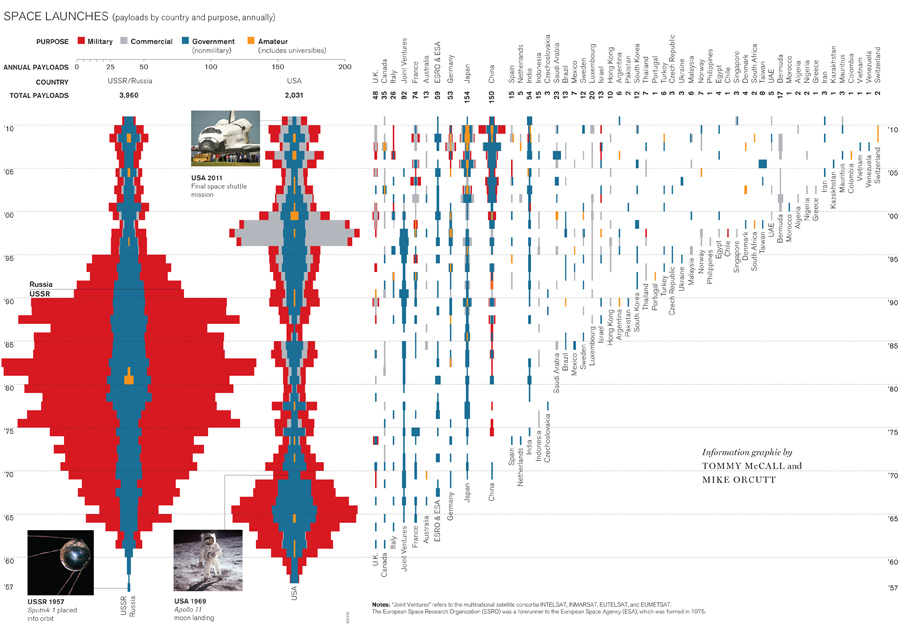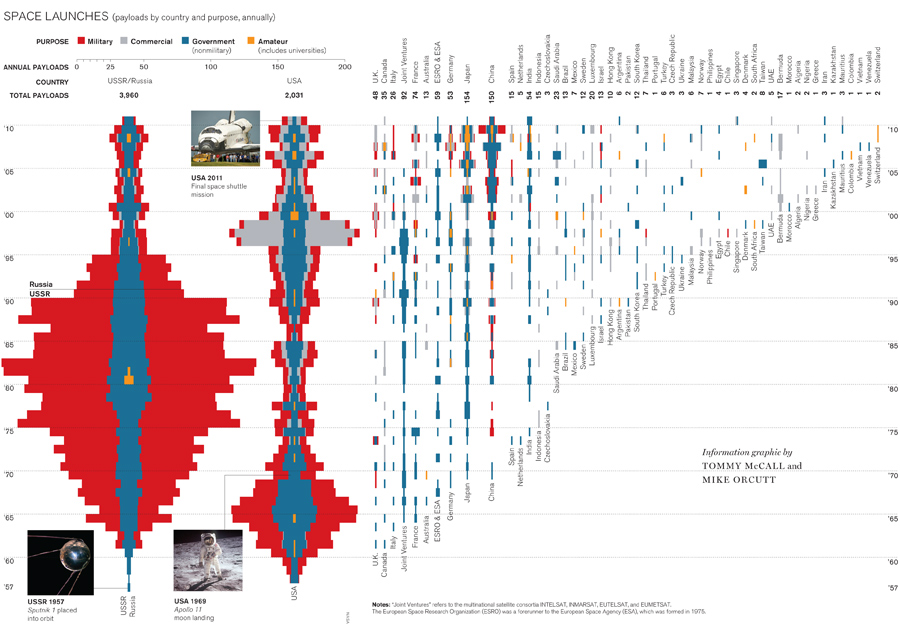

Intelligent Machines
Space over Time
Human exploration is the most visible use of spaceflight, but business and defense satellites fill the sky.

The retirement of the space shuttles marks the end of NASA’s human spaceflight program, at least for now. But human missions funded by the U.S. government have represented only a small part of the action in space.
Of the 7,000 spacecraft that have been launched into orbit or beyond, more than half were defense satellites used for such purposes as communication, navigation, and imaging. (The Soviet Union sent up a huge number, partly because its satellites tended to be much shorter-lived than those from the United States.) In the 1970s, private companies began increasingly adding to the mix, launching satellites for telecommunications and broadcasting.
This graphic groups payloads by the nationality of the owner. A satellite, a capsule of cosmonauts, or a deep-space probe would each count as one payload. The data, which run through July 2011, were drawn from hundreds of sources, including space agency documents, academic journals, and interviews. They were compiled by Jonathan McDowell, an astrophysicist at the Harvard-Smithsonian Center for Astrophysics and author of Jonathan’s Space Report, a newsletter that tracks launches.
Information graphic by Tommy McCall and Mike Orcutt
Advertisement